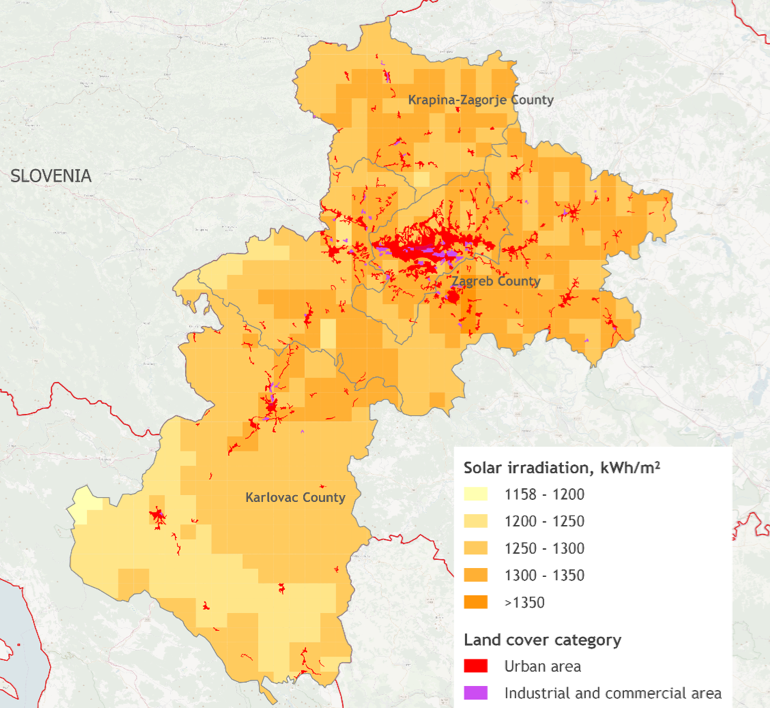Potential for biomass and solar in Croatian district heating networks
Within the framework of the ENTRAIN project, the evaluation of the potential for renewable district heating (DH) in Croatia focused on three counties: Krapina-Zagorje, Zagreb and Karlovac.
At national level, the current Energy Development Strategy identifies biomass as an energy source with very large potential, and the above-mentioned counties show a high density of forests and of land which can be used for short rotation forestry. In addition to that, this also encourages the use of solar energy for heat production.
The main support schemes for financing the development of renewable DH are the Environmental Protection and Energy Efficiency Fund and the European Structural and Investment Funds.
The building stock in the three counties amount to almost 30 million m2, with a total heat demand of around 5 million m2. 70% of this demand is needed by residential buildings, while 20% is covered by commercial buildings and, finally, 10% is for public use. Biomass is the predominant energy source in households with a 68.2% share, while in the public sector it is natural gas with a share of 56.4%.
The assessment showed that in the area of the three counties, the technical potential of biomass energy from forestry can reach 3.55 PJ/year, while 0.49 PJ/year could be obtained by short rotation crops. This total of slightly more than 4 PJ/year could meet around one-third of the overall heat demand in the area.
However, renewable DH is not only about biomass: Solar thermal also can fruitfully contribute to the heat supply. Developed using the Corine Land Cover methodology, the figure below shows the industrial and/or commercial areas (purple zones in the map) whose roofs could host solar thermal plants which can then supply energy, through DH networks, to the urban areas (red zones in the map). As far as the potential solar output is concerned, the map also reports the distribution of annual solar irradiation, which is similar in all three counties, and ranges between 1.200 and 1.350 kWh/m2 year.

Urban and industrial areas, and solar irradiation of the ENTRAIN target area in Croatia
(Header picture - Zagabria by Arvid Olson on Pixabay)
